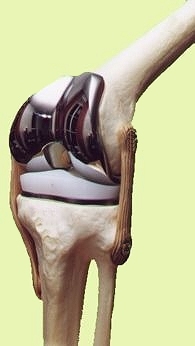Knee replacement surgery
seems to have reached maturity. In fact, it would appear to
be as reliable, if not more reliable than hip replacement
surgery which came into clinical use many years before the
knee replacement surgery that we know today. We know that
the knee is more than a simple hinge. The knee replacement
must adapt to a complex set of motions and it seeks to do so
while maintaining as much of the normal anatomy as possible
(especially the ligaments). Investigators have approached
this through different designs which explains the number of
different knee replacements models available on the market
today.
The following is
what you need to know on knee replacement
:
There are many types of knee replacements
on the market today.
1) So-called unicompartmental
replacements address only the part of the knee which is
arthritic and leaves the remainder of the knee untouched.
All ligaments are left intact. Knee replacements can be used
to address the medial femoral-tibial compartment, the outer
femoral tibial compartment or the patello-femoral
compartment. These implants can be used to treat arthritis
or osteonecrosis. They have been used for more than twenty
years and they involve relatively little bone
resection.
2) Total Knee Replacements. These
implants remove all of the cartilage in the knee while
attempting to maintain the normal physiology of the knee.
These implants are recommended in situations of more
extensive arthritis and in so-called inflammatory
arthritides. These implants feature a plastic component
which can be fixed or which can rotate.
3) Hinged Knee Replacements (rotating):
These may be recommended when there is a serious bone loss
and deformity present and/or major deficiency of the
collateral ligament.
Results from knee replacement surgery (based on pain and
function) keep getting better and are now equivalent to
those obtained with total hip replacement surgery. The
recovery is relatively rapid as there is early assisted
ambulation and no immobilization of the knee. The
indication for surgery is mainly predicated on pain.
